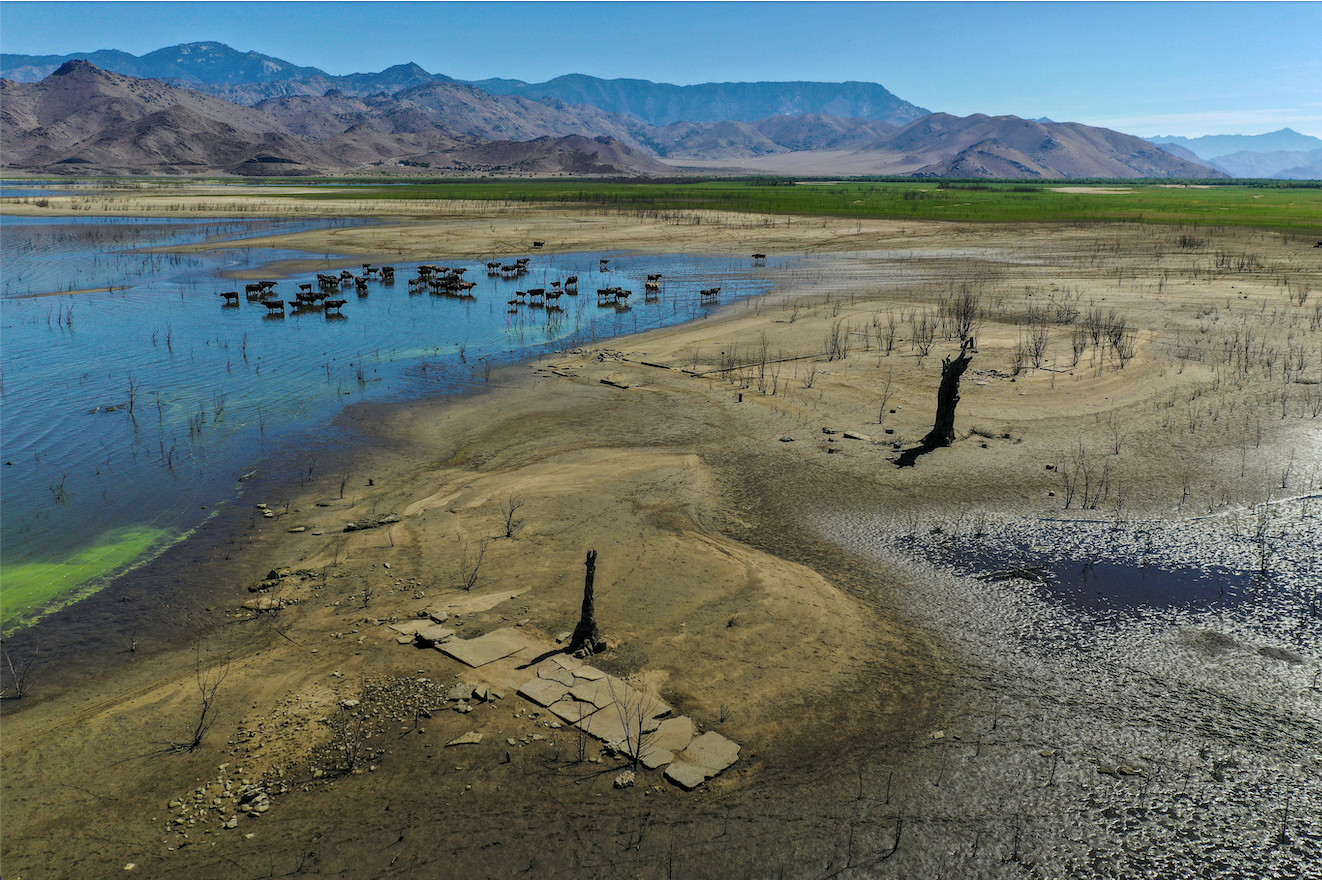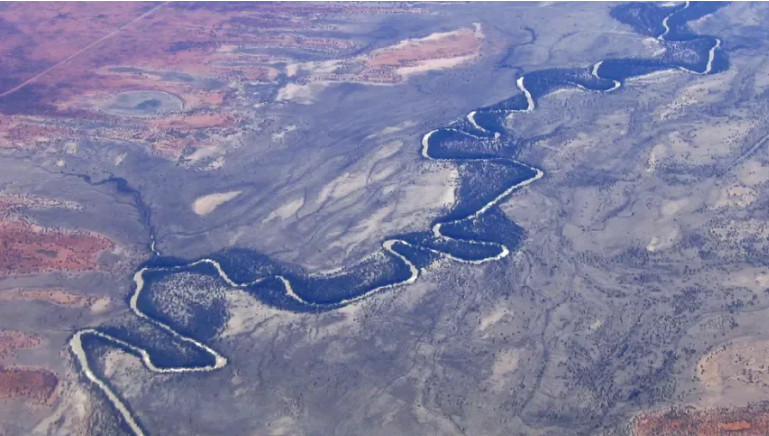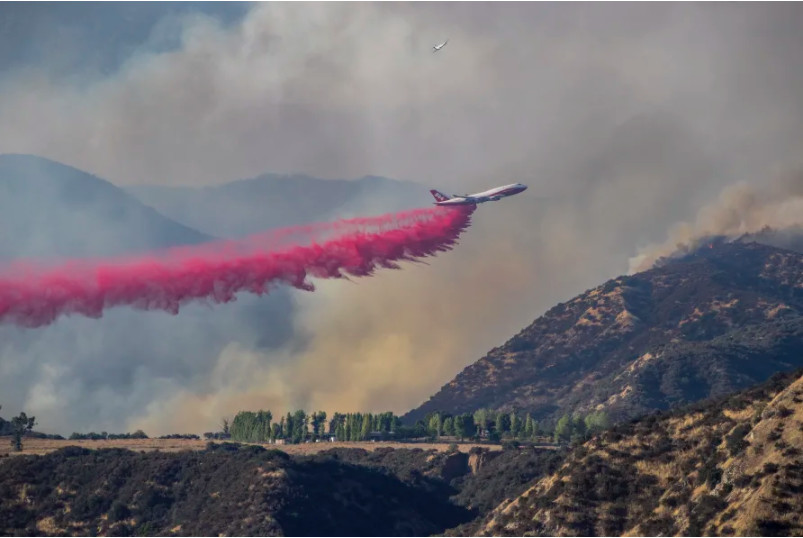
Environment
How to undo Australia’s epic water fail

There is less and less water in the US and Australia – and more and more people want it. Emulating Australia’s failing water market won’t help the US manage this precious resource
Published 29 June 2021
In Australia and America, major irrigation schemes have long attracted an aura of shady dealing by vested interests.
As far back as 1975, that reality was reflected in cinema. Roman Polanski’s film ‘Chinatown’, which revolves around irrigation and theft and corruption, is now widely regarded as one of the best films of all time.

Fast forward 45 years, and in Australia rights to irrigation water can now be traded as a market commodity like energy or soybeans.
Annual trading of irrigation water rights is worth $A1.8 billion directly. The total market value of water rights is estimated at $A26.3 billion, and the true value of trading and rights is much larger than these figures suggest.

Environment
How to undo Australia’s epic water fail
Apart from an overall ‘cap’ on the volume of water that can be used for irrigation, there are few limits on the market, including where water can be traded, how it is used, and who can participate in the market.
As a result, professional traders and brokers and hedge funds have established strong positions in the Australian water market, actively trading different types of rights in pursuit of arbitrage profits - buying and selling water to profit from price differences.
The federal and state governments and others have welcomed these traders as a source of market ‘liquidity’ and as a driver of correct pricing of water rights.
The overall purpose of Australia’s ‘cap and trade’ approach to water is to make the best use of a scarce resource while limiting overall extraction from the river system.
Like Australia, California has recently seen devastating bushfires – last year’s ‘wildfire hell’ saw 4.1 million Californian acres burned. After the fires, the US south-west missed its ‘usual’ winter rains, and is now experiencing what some are calling the worst drought in 1,200 years.

Yurok fisheries director Barry McCovery Jr declared‘ a climate catastrophe’ in June 2021 following reports of dead and dying salmon in California’s second-largest river, the Klamath. Elsewhere in the Western states, farmers bulldozed thirsty almond trees because there wasn’t enough water for them.

These events mean American policymakers are looking to Australia for lessons about how to manage water extraction and use.
In Colorado, for example, private ‘investors’ play a major role in water transfers. The search for profit has become a powerful force in water management – much to the concern of some leaders and policymakers.
In February 2021, for example, Colorado Attorney General Phil Weiser told the Colorado Water Congress: ‘Just as in Australia, there are those inside and outside Colorado ready to profit from water markets at a time of crisis for our state . . . . But Australia teaches us that open markets alone cannot solve the problems we are facing together as a state.’
The US can take a lot of lessons from Australia – about market design, and about the risks and pitfalls that no design can address. First, here are a few design problems.
1. Australia’s water market designers didn’t pay enough attention to trader conduct or integrity. There are few controls in Australia on water exchanges or water brokers.
A 2021 report by competition regulator ACCC concluded the water market had ‘major deficiencies’ in relation to trader conduct and the quality of market information.

Behaviours that are prohibited in other markets are widespread in water trading. As ACCC Deputy Chair Mick Keogh told the ABC this year, ‘There is no law against market manipulation in the . . . water markets, so it’s not illegal, even if it is occurring’.
2. Australia’s water market is overly fragmented. The market designers allowed a thousand flowers to bloom.

Sciences & Technology
Bushfires and storms threaten water supply and much more
There are multiple trading platforms, and for every type of water right there is no single ‘market price’ at any given moment. Information is fragmented, and the overall market is in a permanent state of disequilibrium. As we told Ben Ryder Howe for the New York Times, the result is ‘a paradise for arbitrage’.
3. The ‘cap and trade’ model doesn’t cover the whole river system. Some farmers engage in ‘floodplain harvesting’ – unregulated capture of water, which is then used or sold. It is estimated that a single company (currently being investigated by New South Wales’s water watchdog) is ‘harvesting’ as much as 9 billion litres a year and selling it to farmers of walnuts and other water-hungry crops.
This practice undermines the basic purpose of the cap and trade scheme and it reduces confidence in the market.
4. The market design and associated policies have had perverse consequences in water use. Before water rights had a market value, some of the rights weren’t used (they were ‘sleepers’) or they were used only rarely (‘dozers’).
But water trading, and the rise in water prices, has woken up the sleepers and dozers, thereby increasing overall use. Sarah Wheeler of the University of Adelaide recently found that other government policies (such as grants under the $A13 billion Murray-Darling Basin Plan) encouraged irrigators to expand production and use more water.

In addition to these design problems, the Australian experience also highlights a fundamental problem with the open trading of water rights. There is a huge power imbalance between farmers and professional traders. Big advantages in speed, computer programs and market expertise allow professional traders to dominate the market, while farmers need to spend time actually farming.

External traders were invited into the market because they would bring ‘liquidity’. But Australia has paid too much for the liquidity (in the form of lucrative arbitrage profits at farmers’ expense), and the liquidity itself is of poor quality and the market doesn’t function well.
Water words keeping us all in the dark
In the US as in Australia, there is less and less water – and more and more people want it. Climate change and drought are godsends for the traders, who relish scarcity and the desperation of farmers.
With this confluence of disasters, the management of irrigation water is in urgent need of reform. But in both countries, the policy debate is bogged down by a lack of clarity.
There is little precision in the debate – terms such as ‘hoarding’, ‘speculation’ and ‘investment’ are used without consistency – and water market officials use language in a way that baffles outsiders.

The phrase ‘investing in water’, for example, is used to mean many different things, some of them benign, some less so including (i) buying water and using it in farm production; (ii) investing in on-farm water management and efficiency (directly or via a fund); (iii) buying into a farming business that is water-intensive; (iv) buying and holding long-term water rights; (v) actively trading short and long-term water rights; (vi) putting money into a fund that owns water rights as a long-term financial investment; and (vii) putting money into a hedge fund that actively trades water rights.

Environment
Water management? Yes, it’s personal
As documentary producer Lynne Kirby told Constance Penley of the University of California, in Water and Power: A California Heist (2017), the language of water is a barrier to transparency and therefore to good policy.
We hope Australia’s Federal Government will follow President Biden’s commitment to fighting climate change. But at the same time, we hope America doesn’t follow Australia’s path to water market failure.
And for the water policy debate to go forward in both countries, we all need to speak the same language.
Banner: Badwater Basin, 282 feet below sea level, is seen inside Death Valley National Park on June 17, 2021 in Inyo County, California. Getty Images